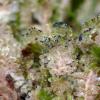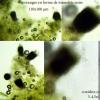
02-12-2025 18:59
This pair of ascos 2.5cm across were on recently b

02-12-2025 19:25
Buckwheat PeteHello, can anyone identify this hairy fungus growi

30-11-2025 12:53
 Edvin Johannesen
Edvin Johannesen
White short-stipitate apothecia found on thin twig

30-11-2025 10:47
 William Slosse
William Slosse
I recently found a collection of small Peziza sp.

27-11-2025 12:01
Thomas Læssøehttps://svampe.databasen.org/observations/10496727

27-11-2025 11:46
Thomas Læssøehttps://svampe.databasen.org/observations/10493918

17-09-2025 10:50
Heather MerryleesHi there!I am hoping for any advice on the identif

29-11-2025 08:40
 Andreas Millinger
Andreas Millinger
Hello,on a splintered part of a branch on the grou

28-11-2025 16:45
Nogueira HéctorNovember 23, 2025 Requejo de Sanabria (León) SPAI
 Bonjour à tous,
Bonjour à tous, Quelqu'un aurait-il une idée sur ce champignon imparfait sur feuilles d'hépatique à feuilles (Diplophyllum albicans) ?
Bernard


Best regards,
Bernard


I actually saw this quote from Sclerotium on Diplophyllum albicans. A. Racovitza did an extraordinary work, what a job !
Bernard
Hallo,
I would say the pycnidia belong to the lichenized fungus Micarea botryoides (Nyl.) Hedl. (eventually to a closely related taxon - there may exist undescribed taxa within this group of Micarea)
it is not a rare species on shaded sites, it shows quite a broad ecology, growing on rocks and bryophytes/detritus on them, switching also to shaded bark, it prefers sites protected from rain, dark convex, often tuberculate apothecia are formed not so often
Zdenek

Bernard

I guess, the fungus from the link to a blog is something else, synnematose, indeed.
In this case I expect pycnidia of Micarea.
Micarea botryoides is quite a common lichen and superficially may resemble a synnematous non-lichenized fungus. Most species of Micarea contain a small-celled 'micareoid' alga (with cell 4-7 um) so you may check this. Pycnidia of M. botryoides also should contain 'cinereorufa-green' pigments that are reddish-purplish with adding of nitric acid, and intensifying green with KOH
See also the exceptional monograph on Micarea by Coppins (1983) for pycnidia and other details on ecology , morphology , taxonomy: https://ia801406.us.archive.org/17/items/bulletinofbritis11britlond/bulletinofbritis11britlond.pdf


